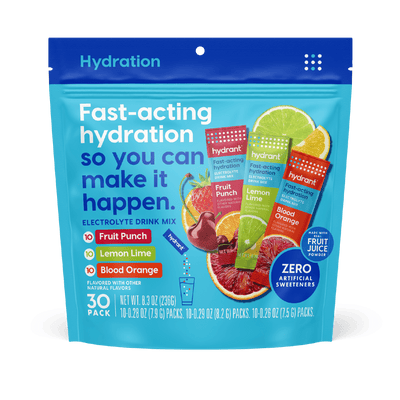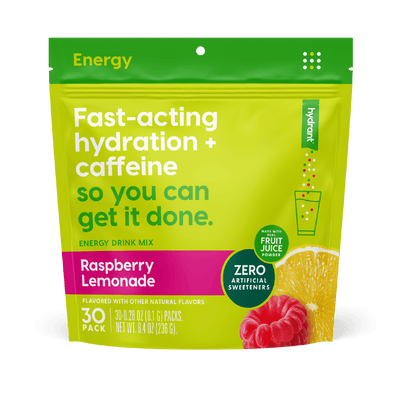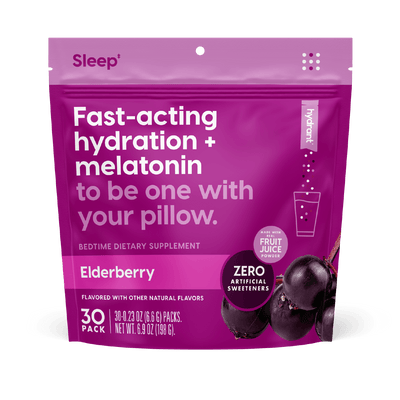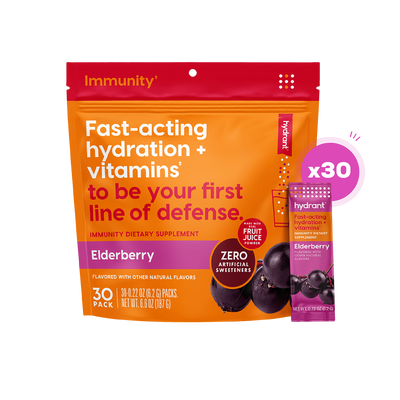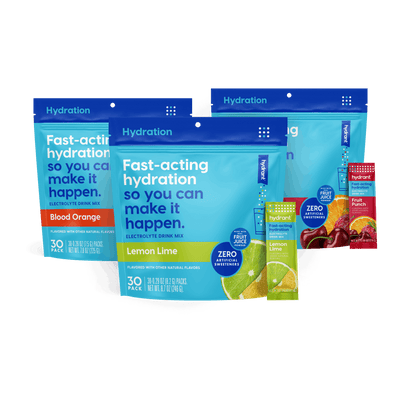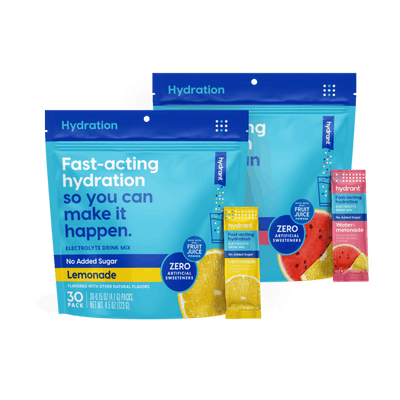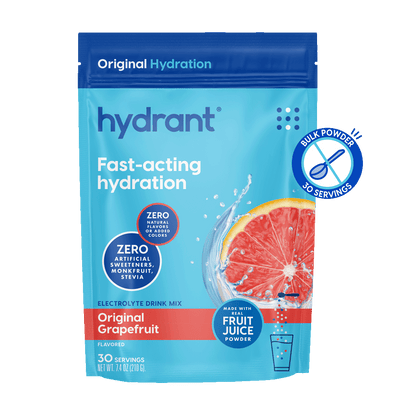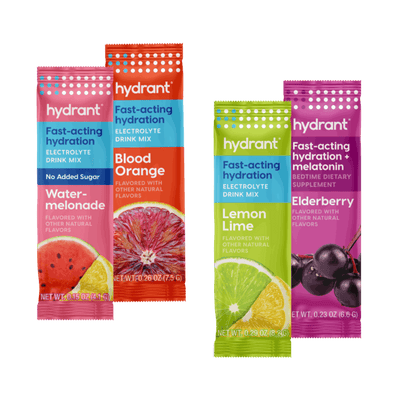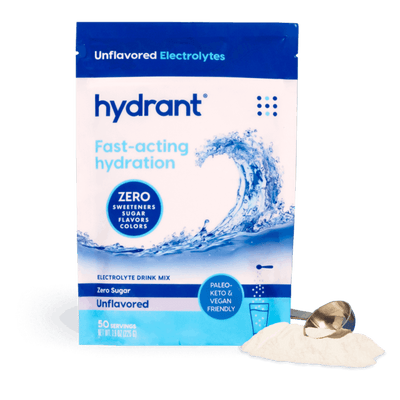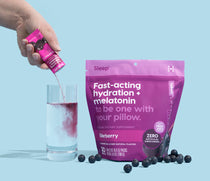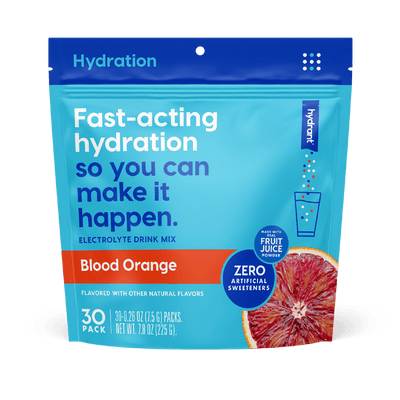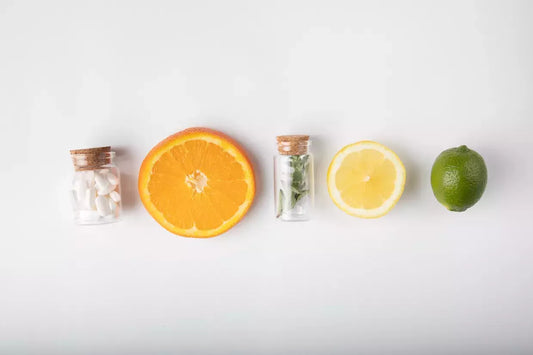In designing Hydrant, we dove deep into the science of our ingredients, ensuring each was included at optimal levels. We’ve simplified all that science here, to answer your questions about how we can offer you the most effective hydration.
Let’s start with Sodium, a simple common place element found in two of our ingredients, Sodium Chloride (Salt) and Sodium Citrate.
What is Sodium?

High school chemistry taught us that Sodium is a metal, found in the leftmost column of the Periodic Table. Cool. But what does that mean for hydration? Isn’t sodium a salt, not a metal? Good thinking!
Sodium by itself is an alkali metal—and a highly explosive one at that—but is commonly found in nature as an ionic salt, Sodium Chloride. The Sodium ion and the Chlorine ion buddy up to form a clear-white crystal that dissolves easily in water.
When Sodium Chloride dissolves in water, the Sodium and Chloride ions that buddied up break apart. This allows the Sodium ions to go and do their own thing. We’ll be returning to that later. (Hint: It’s hydration).
Where is Sodium Found?
The Ocean! Ocean water is collected and left to evaporate, leaving solid salt behind. Sodium is also naturally present in plant, animal, and mineral sources. But our daily intake of Sodium comes mostly from the extra salt added into our diets (ahem, tacos).

Is Sodium Healthy?
Like the best of things, only in moderation. Without Sodium, you would get very sick, very quickly. But too much Sodium can also make you sick.
So how do you know how much you need? For daily intake, we recommend taking a peek at the FDA’s guidelines for the recommended amounts.
These days Sodium has been getting a bad rep. Blame too many tacos. (Just kidding, there’s no such thing as *too* many tacos). But guacamole craving aside, Sodium’s bad rep comes from Americans’ tendency to over consume packaged food and takeout.
Check out this handy guide from the FDA, which outlines where a lot of this excess Sodium is coming from. We think it does an excellent job of breaking down how too much Sodium in your diet can lead to high blood pressure. It also mentions how Potassium ions can work in tandem with Sodium ions, balancing out the bad, and helping to establish optimal mineral levels for the best, healthiest you. That’s why we’re not worried about the high Sodium content in Hydrant. We’ve also included Potassium (as Potassium Citrate), allowing Sodium to be present in amounts optimal for hydration, without throwing your chemistry out of whack.
In addition to over consuming Sodium, it is also possible to under consume Sodium. Though extreme, without Sodium, you could experience Hyponatremia. Common symptoms include confusion, fatigue, headache, loss of appetite, and nausea. The US National Library of Medicine breaks this down very simply. It’s worth checking out.
What is Sodium used for in our Bodies?
Sodium is an essential mineral, whose intake is necessary to living healthy, awesome lives. A small-but-mighty mineral, Sodium is involved in a number of body processes:
1. It regulates blood pressure and blood volume

2. It helps establish an optimal pH
3. It is crucial to the function of your nervous system, helping the transmission of signals between nerves.
How is Sodium Involved in Hydration?
When you lose water from your body, you lose some essential minerals and electrolytes along with it, such as Potassium and Magnesium. To keep you running, you need to put back in the Sodium you’ve lost, as well as the water.
When Sodium ions are dissolved in water, they can change what’s called the osmotic pressure inside and outside of a cell. Very simply, the osmotic pressure is measure of how much pressure would have to be applied to a liquid to get it to pass through a membrane. Think: how much pressure needs to be present to get water into healthy cells, and move waste out. In our bodies, this pressure is applied, weirdly enough, in part by the type and amount of salt present in that water. You need just the right amount of Sodium in your body to help the perfect amount of water move into and out of your cells. Salt is essential to hydration. And it’s mission-critical to rehydration.
Final Note (thanks for sticking with us!)
This is a deeper dive on Sodium than you likely bargained for, but it’s not exhaustive.
Essential to our health, Sodium has been heavily researched. It can be difficult to sort through all that literature and science speak. We know, we’ve done it. You can leave the nitty-gritty details to us, biologists. But if you’d like to learn more, here’s some further reading. (Maybe beach reading? Might pair well with a taco, just saying.)
- A quick run-through of Hyponatremia, a health concern associated with too little Sodium: US National Library of Medicine.
Thanks again for sticking with us through all that. Have any more questions or concerns? Email us anytime at hello@drinkhydrant.com.
Want to get hydrated effectively? Try Hydrant here.
Is your routine dehydrating?
Are you concerned about your own hydration levels? Take the quiz below to find the best Hydrant for your hydration routine.
This piece was written up by chemistry guru Lizzy Trelstad of Beaker.
